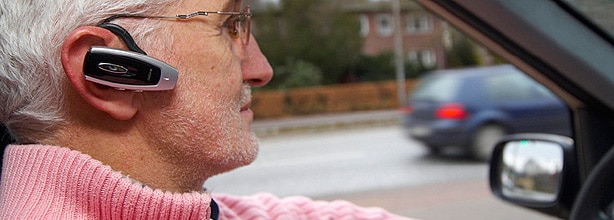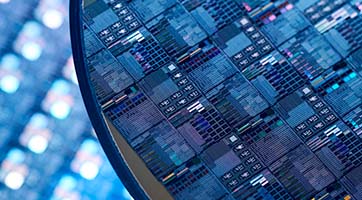
- Semiconductor Technology Now
Report Series
Other countries are ahead of Japan in sports technology
Other countries have been quicker than Japan in bringing technology into sports. When Yukio Kasaya won the gold medal in ski jumping at the 1972 Olympics in Sapporo, he kept a low profile during his approach on the hill with both arms pointing forwards. However, two years later, the skiing world was shocked when a formerly unknown jumper named Hans-Georg Aschenbach from Germany won the World Championship with his own approach style, in which he kept his arms pointing rearwards. When a fluid dynamics specialist was asked to calculate this posture's air resistance, it turned out that this new style suffers less air resistance than the conventional style of keeping both arms pointing forwards. Since then, all jumpers have changed to this “arms backward” style.
In the U.K., a project aimed at the London 2012 Olympic Games was placed in motion even before the event. With the ambitious goal of winning the most gold medals possible, the “Gold Project” set out to scientifically analyze Olympic sports and how to build ideal bodies. Imperial College London was also working with teams developing and analyzing biosensors. They were trying to discover the optimal warm-up method and a quick recovery method by analyzing changes in the volumes of and biomarkers in bodily fluids (such as sweat, blood, and saliva), as well as physical abilities and degree of recovery (Reference 3).
The College had all the resources necessary for developing sports technologies, including IT, electronics, medical biosciences and other courses, device and computer architecture, software including proprietary operating systems, modeling and numerical computation, biochemistry, physical property, and materials. Correlating sensor signals with physical abilities, statistical data processing, modeling, and adjusting equipment for enhancing physical abilities, etc., were carried out there.
Recent problem: Thick-soled shoes
The use of technology to enhance athlete’s physical abilities has been tacitly permitted for a long time. However, the adoption of technology has been rejected at some athletic events, where the technology was considered to represent an artificial device that enhanced athletic abilities. British company Speedo’s LZR Racer swimwear, which was adopted at the Beijing 2008 Olympic Games, was considered to be this kind of artificial device. Of course, there were also countering opinions, and there seems to be room for further discussion.
What has captured attention more recently is Nike’s thick-soled shoes, which soften the impact on marathon runner’s feet. Many runners have achieved their personal best time wearing these shoes, so there seems to be no question about their effectiveness. If the knees and feet do not hurt during a marathon, runners will be able to aim for new records at their own best pace.
However, in August 2020, World Athletics made an announcement regulating the use of thick-soled shoes in track events ([References] 4 and 5). The permitted sole thickness varies depending on the event (Reference 6). For example, in track events shorter than 800 m, the sole thickness must not exceed 20 mm, while in road events such as marathons, the maximum permitted sole thickness is 40 mm.
Prosthetic legs used in Paralympic Games have a spring structure that assists with propulsion from the ground. Consequently, the possibility that Paralympic athletes could establish records superior to those of regular athletes has been pointed out. This could also be considered an artificial device. However, such a position could deprive physically disabled people of the opportunity to participate in athletic events. To prevent such an outcome, it is essential that athletes’ opinions and comments be delivered to the field and track event organizers, similar to lobbying activity.
Part 2 in the series will report on how data on athletes is collected and the fact that technology has also led to injury prevention. Part 3 will introduce technologies that, rather than helping athletes, focus on making refereeing fairer.
[References]
- 1.
- How Is Machine Learning Changing Sport? (Innovation Enterprise)
https://channels.theinnovationenterprise.com/articles/games-by-numbers-machine-learning-is-changing-sport
- 2.
- IBM Developer Outreach recap: Elevating sports with AI
https://developer.ibm.com/blogs/how-ibm-uses-ai-to-enhance-sports-fandom/
- 3.
- System-integrated Second-generation Sensor Technology (2)—U.K. Using This Technology in Olympics
https://www.semiconportal.com/archive/editorial/technology/design/120222-sport.html
Writer
Kenji Tsuda
International technology journalist, technology analyst
Kenji Tsuda is a freelance technology journalist who writes both in English and Japanese. With over 30 years of work experience covering the semiconductor industry, Tsuda has been offering various insights to the industry through his blog (newsandchips.com) and analytical articles. He is editor in chief of the Semiconportal site (www.semiconportal.com) and writes the “Car Electronics” article series for Mynavi News site as a columnist.
Tsuda started his career as a semiconductor device development engineer, before becoming a reporter for the Nikkei Electronics magazine at Nikkei McGraw-Hill (now Nikkei BP). At the company, he created several magazines including Nikkei Microdevices (in Japanese), Nikkei Electronics Asia, Electronic Business Japan, and Design News Japan (in English), and Semiconductor International Japanese Edition. Tsuda went freelance in June 2007 as an international technology journalist. Books he authored in Japanese include Megatrend in Semiconductors 2014-2023 (Nikkei BP), Why We Shouldn’t Let Go of the Semiconductor Industry (Nikkan Kogyo Shimbun, Ltd.), The Truth about the European Fabless Semiconductor Industry (Nikkan Kogyo Shimbun, Ltd.), The Latest Trends in Green Semiconductor Technology and New Businesses 2011 (Impress Corp.).



















